Yield of Soybean in Response to Different Doses and Moments of Irrigation
DOI:
https://doi.org/10.31285/AGRO.21.2.9Keywords:
evapotranspiration, deficit irrigation, water productivity, irrigation schedulingAbstract
In Uruguay, climatic conditions and soil water availability determine periods where evapotranspiration (ET) exceeds available water, producing a water deficit for the plants. Due to our interannual rainfall variability, this situation worsens and yield losses occur caused by deficit periods. Implementing irrigation to meet the requirements of ET needs large amounts of water. The application of water below the requirements for maximum ET is defined as deficit irrigation (DI) and is a strategy that increases water productivity. The technique known as regulated deficit irrigation (RDI), which considers the sensitivity of crop development phases to water stress can improve water productivity even more. This research studies these irrigation practices and their impact on the soybean crop yield. Two trials were evaluated using different doses and irrigation timings. According to the results, there is a linear-plateau response of yields to total effective water. Water deficits caused a significant yield reduction. RDI irrigation strategy showed to be an alternative that in Uruguayan conditions can achieve maximum yields allowing water savings up to 22 %. The usage of a daily water balance schedule according to the FAO Guide N° 56 methodologies is essential for a proper irrigation management.
Downloads
Downloads
Published
How to Cite
Issue
Section
License
Copyright (c) 2017 Agrociencia Uruguay

This work is licensed under a Creative Commons Attribution 4.0 International License.
| Article metrics | |
|---|---|
| Abstract views | |
| Galley vies | |
| PDF Views | |
| HTML views | |
| Other views | |

















